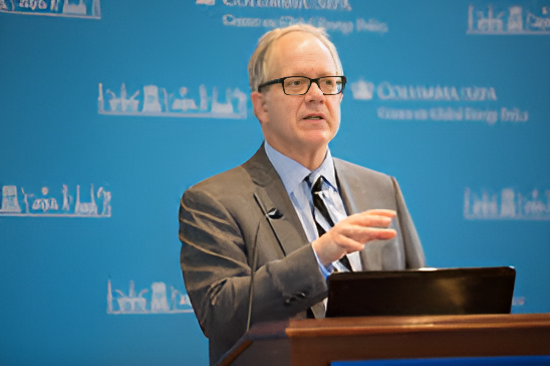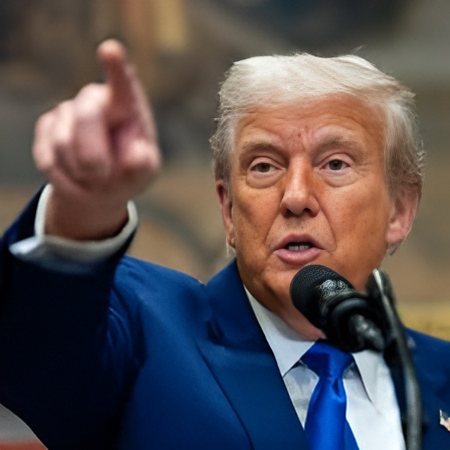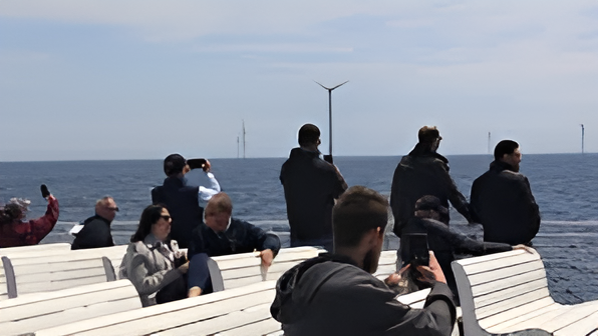The offshore wind sector has been stagnant with federal leasing halted, tax credits eliminated and developers pulling out of core markets
President Donald Trump energy policy changes are putting America’s offshore wind industry in jeopardy, with more than 22 projects on hold and an estimated $114 billion in clean energy investments at risk.
The Biden administration has been making some dramatic strides in its push toward renewable energy, particularly wind power. Several offshore wind project policy decisions involving billions of dollars in investment, projects, and infrastructure were made before he took office. But Trump’s reversal of that Biden-era clean energy aid — along with an executive order suspending offshore wind leasing and permitting — has brought development along the East Coast to a near standstill. Energy experts warn that the stalling could hurt states’ climate goals and derail America’s renewable energy ambitions for the next decade, potentially costing billions of dollars.
Trump Energy Policy Halts Offshore Progress
On his first day in office, President Trump signed an executive order halting new and renewal approvals for offshore wind projects pending a full federal review. The order effectively withdraws federal waters from offshore wind leasing and suspends agency operations across multiple departments, including the Bureau of Ocean Energy Management (BOEM).

While the review remains incomplete, the White House has declined to provide details or a timeline for a resolution.
“The result I fear is unexplained delays,” said Jonathan Elkind, a senior research scholar at Columbia University’s Center on Global Energy Policy. “There’s no transparency here.”
Permits revoked, projects canceled
Since the order, numerous wind projects have had their air permits revoked, environmental assessments delayed, and construction halted. As a result of regulatory uncertainty, a major offshore project in New Jersey has pulled out of its state power contract after the EPA’s decision to revoke its permit. France-based renewable energy developer EDF has formally withdrawn from its $5 billion Atlantic Shores offshore wind project in New Jersey, which was set to generate up to 1,500 megawatts of power, decarbonize the U.S. power grid, and provide clean electricity to more than 700,000 homes.
Industry data shows that 22 wind farms spanning states from Massachusetts to North Carolina are either on hold in the planning stages or have been pulled out of the pipeline entirely. In the New York Bay, once a centerpiece of Biden’s offshore wind campaign, at least two projects have been formally canceled.
The delays would affect about 22 gigawatts of planned capacity — enough to power millions of homes.
$114B Offshore Wind investments at risk

According to an April analysis by BloombergNEF, the Trump’s energy policy changes have forced developers to pull out of projects that have yet to reach a final investment decision (FID). Without assurances of federal support, companies are delaying supplier contracts, canceling financing rounds and exiting joint ventures.
Shell and Equinor, the two largest investors in the sector, have already pulled out of key offshore developments in New Jersey. Shell has confirmed that it will not be building any new offshore wind projects in the United States.
“The commercial situation is no longer viable,” said Natalie Gunnell, a spokeswoman for Shell’s renewable energy division.
The Republican Party has moved to repeal the Clean Energy Tax Incentive.
The industry slowdown comes amid efforts in Congress to repeal key provisions of the Inflation Reduction Act, including the Clean Energy Investment Tax Credit. Clean energy projects would have to begin construction within 60 days to qualify for the home-grown energy package, and would be phased out entirely by 2028.
The current Senate version drops the 60-day provision while maintaining the phase-out provision. Industry advocates argue that the proposed changes add another layer of uncertainty, further cooling investment.
“It’s creating an environment where financing and procurement deals are not moving forward,” said Harrison Schoeller, an offshore wind analyst at BloombergNEF.
Supply chain expansion stalls nationwide
Beyond the coast, the impact is being felt across the U.S. wind supply chain. For example, Siemens Gamesa’s plan to open a Virginia blade manufacturing facility in 2023 was canceled due to insufficient demand. Vestas’ proposed nacelle assembly plant in New Jersey has been quietly shelved.
As domestic suppliers retreat, future U.S. wind projects could become more reliant on imports—with developers facing potential tariffs on European components proposed by the Trump administration.
As a result, analysts estimate that production costs could increase by up to 25% over current policy conditions.
Climate Goals at risk
The United States is now expected to generate just 6.1 gigawatts of offshore wind power by 2030, 20% of the Biden administration’s original 30-gigawatt goal. Eleven states with offshore wind targets are unlikely to meet them, according to a project-by-project review by BloombergNEF.
“There’s been a chilling effect across the industry,” said Katharine Collins, president of the Southeastern Wind Coalition. “We’re seeing projects being scrapped and approvals being delayed nationwide.”
The impact extends beyond power generation. Thousands of green jobs, from technicians to engineers, are at risk in shipbuilding, steelmaking and port construction. State officials have begun revising energy roadmaps as the federal government restricts wind development.
South Fork Wind Farm
One example of Biden’s success in offshore wind projects is the name of South Fork Wind Farm. It is New York’s first commercial offshore wind farm and is considered a milestone toward meeting the United States’ 2030 renewable energy goals.
The 150-megawatt offshore wind farm is a groundbreaking project in the search for sustainable energy solutions. It is the first offshore wind project in the United States to connect to the national grid in 2024. It is one of the achievements of the Biden-Harris administration, symbolizing the 2030 wind policy.
Jointly owned by Danish multinational Orsted and US energy supplier Eversource, the wind farm has a capacity of 130 megawatts and can generate clean energy for more than 70,000 homes. It is a major step towards achieving New York’s goal of generating 70% of its electricity from renewable sources by 2030. Located about 35 miles off the coast of Montauk, the wind farm is expected to eliminate up to six million tons of carbon emissions over its lifetime, the equivalent of taking 60,000 cars off the road for the next 20 years.
South Fork Wind is providing more than 1,200 direct construction jobs and thousands more indirect and induced jobs. Hundreds of New Yorkers, engineers, electricians and conservationists are operating the South Fork Wind project. It aims to create thousands of long-term and temporary environmentally friendly jobs, support training programs, fund scientific research and provide opportunities for underserved communities.
Some Hope, But Not Clear
Despite the stalemate, a handful of offshore wind farms are under construction, including Empire Wind in New York, and are expected to be completed by 2027, adding about 5.7 gigawatts of power to the East Coast grid. But experts warn that these projects represent legacy investments from previous administrations, not signs of future progress.
“There are still opportunities here,” said Hilary Bright of the national offshore wind advocacy group Turn Forward. “But without policy coordination, those opportunities won’t materialize.”
The Bottom line
The future of offshore wind in the U.S. under the Trump’s energy policy with administration’s current energy strategy is highly uncertain. With billions in clean energy investments on hold and dozens of projects stuck in regulatory deadlock, the path to a low-carbon energy grid is narrowing. The U.S. is moving away from green policies, lower greenhouse gas emissions, and efforts to limit warming to 1.5 degrees Celsius. Absent major federal policy changes or legislative compromises, America’s offshore wind projects ambitions will likely remain on hold for the next decade.


ie788g
appx4d